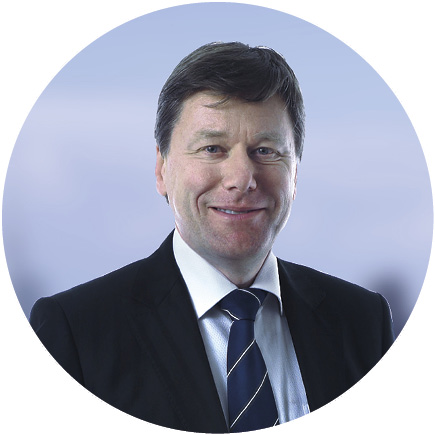

The significance that high
quality fibre cables will have
on the viability of Europe’s
future infrastructures, which
will form the backbone
of Europe´s Digital Single
Market, is being increasingly
acknowledged by key business
and policy makers across the
continent.
Philippe Vanhille, Executive Vice President of Telecom Business at Prysmian, urges institutions and the public across Europe to embrace the most modern fibre technology in order to ensure the success of long-lasting, high-speed networks, both technically and commercially. As a community of technology experts, “we must capitalise on our know-how and the advanced technologies available, to progress towards the end goal of a single space where products and information can be traded seamlessly via digital means,” explains Vanhille. He believes that putting emphasis on the quality of the infrastructure “means that access to this space is not dependent on nationality or location”, while “paying attention to the quality of our collective infrastructure is a must for minimising disruptions and for really delivering to end users the service they pay for”.

Sales managers from Prysmian Italy met earlier this year with Fastweb, a telecommunications company specialising in landline telephone and broadband connection services, and one of the Group’s key customers. The meeting allowed us to become more familiar with the telecom solutions business.
It additionally served as an opportunity to focus on and engage in dialogue with the customer, so as to be increasingly effective in satisfying its needs, in a customer-centric way.
Fastweb provided a detailed illustration of the characteristics of its fibre-optic network, which is currently Italy’s most extensive proprietary next-generation network based solely on Internet Protocol (IP).
VH Fibre Optics, Prysmian’s value-added reseller, introduced Prysmian VerticasaXS and RetractaNetXS into the South African market about four years ago. Since then, these products have been used extensively in the company’s recent FTTx rollout projects.
Policymakers, regulators, operators and end users recently gathered in Luxembourg at the annual Fibre to the Home (FTTH) Conference, to discuss fibre infrastructure solutions for the coming years in a two-day meeting for which Prysmian Group was Gold Sponsor. Edgar Aker, Prysmian Group’s Director of Marketing & Business Development in the Netherlands and President of the FTTH Council Europe, noted that global demand for fibre optic cable has been increasing dramatically, with few signs of slowing Jean Pierre Bonicel is Chairman of France’s Objectif Fibre, a platform created in 2009 and representing the optical fibre industry with an overall workforce of some 800,000 employees. France launched a National Broadband Plan in 2013 known as Très Haut Débit, aimed at delivering high-speed fibre- based broadband across the nation within a decade, and with an overall investment of at least €20 billion. “High speed fibre will strengthen the competitiveness of our companies and the quality of our public services. It isanopportunitytopreserveand develop employment,” Bonicel explains. Cable installation jumped from 4 to 6 million km between 2013 and 2014 with a Speeding up in France anytime soon. FTTH penetration in the Asia Pacific region passed 100 million fibre subscribers, there are large FTTH deployments in both Americas, while national plans are also underway in the Middle East.
The trend in Europe also points upwards, with a 50% increase to 14.5 million fibre subscribers in 2014. But complexity within Europe remains a concern and at times is blocking wide-scale fibre rollouts, Aker warns.
As far as Europe is concerned, it’s clear that public money should only be invested in future-proof solutions, notes Aker. The European Commission’s technology neutrality can lead to misconceptions, and to unambitious targets that generalise all technologies. Public authorities should set clear targets that include not only download speeds, but also upload speeds, robustness and quality of service, and low latency amongst others. These are all vital for the interactive services of tomorrow. The FTTH Council Europe aims to help member states by pointing them in the right direction through active debate, acting as a catalyst. We are not standing in the middle; sometimes you have to take the lead. The future is definitely fibre.

Jean Pierre Bonicel is Chairman of France’s Objectif Fibre, a platform created in 2009 and representing the optical fibre industry with an overall workforce of some 800,000 employees. France launched a National Broadband Plan in 2013 known as Très Haut Débit, aimed at delivering high-speed fibrebased broadband across the nation within a decade, and with an overall investment of at least €20 billion. “High speed fibre will strengthen the competitiveness of our companies and the quality of our public services. It is an opportunity to preserve and develop employment,” Bonicel explains. Cable installation jumped from 4 to 6 million km between 2013 and 2014 with a +15% increase projected in 2015. “But”, he adds, “We need to almost double this rate to meet the target for 2022. More than 40,000 employees must be mobilised to ensure full deployment; 31,650 technical training courses would be needed to support the skills growth of these new recruits, and 47 national technical support centres would be required in 2 to 3 years to accompany the growth in demand. Bonicel notes that Prysmian has made a major contribution to the writing of the plan’s guide, and is the only operator offering a complete range of products – from preforms and raw fibre, to optical cables and connectivity.